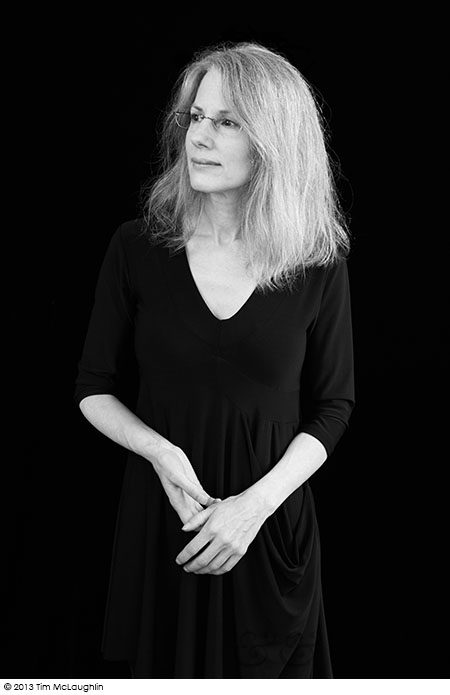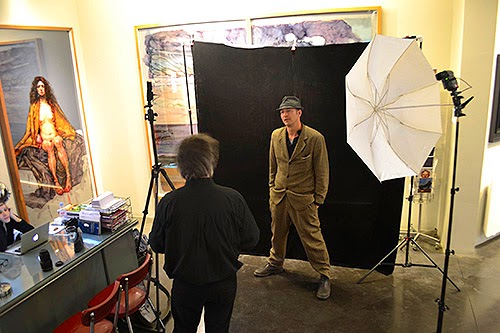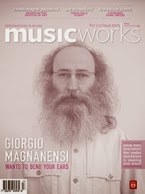I first met Stephen Osborne in his writing several years ago when, as a young man, freshly degreed from University and unable to find work in recession-weary Ontario, I packed everything I owned into my parent’s basement, decided to travel light and headed for the coast where I quickly found work with one of the largest, family-owned book-selling empires. West of Toronto this could only mean Duthie Books. The staff at the flagship store where I started were young, overeducated, underpaid, but, by and large, felt they had landed the best gig in town. They were working in an environment that was at the centre of all that was important – books. We were on in the inside, spending days where everyone else wanted to be. No doubt each had their own personal relationship to the romance of a meaningful life (regardless of whether this vision was based on, say, the intellectual smoke of Parisian cafés, a notion of the lone scriptwriter working at night and shilling books during the day, the nail-chewing novelist, or just the litterocentric polymath who knew that the members of the general public, the great unwashed, those who had not dedicated themselves to a life in books, could never pose a question of either title or author that could not be answered immediately, from the head) each felt that they were at the center of a culture that mattered and each felt fortunate that, as Duthies was itself a family of eccentrics, none of us were ever asked to make the McJob sacrifice and put who you were or who you wanted to be aside while you stacked the shelves and answered petulant queries from disgruntled businessmen who insisted that we carry some motivational guide or – the standing joke in the bookselling trade – dealt with that person who wanted to know if we had a book, but could provide nothing: no title, author, plot, or character – and had only an inkling of the colour of the cover. The great ship Duthie went down and now, sadly, has passed away forever. It has been replaced by box-store outlets staffed by booksellers who are forced to restrain their individuality, wear identical brand-building clothing, and at times, god help us, headsets. I refuse to give up the idea that they are all bibliophiles - but for them the era is over, they were born at the wrong time, arrived too late, and the bookstores they work at are quiet and meaningless, filled, not with straw, but with other things, things that are not books: minor home furnishings and giftwares. If I were to state clearly my own conviction, it would be that a bookstore was a place where ideas were bound up as objects and sold to a public that was hungry for ideas. It was an optimistic view, especially when you added some craft such as typography and design to the objects. It was a view that saw labouring with ideas as important, and held that the general public was, if not preoccupied with, at least interested in a culture of ideas and the vehicles that contained them.
It was here, in the early nineties, on the magazine stand of the 10th ave. Duthies that I first encountered the prose of Stephen Osborne. The writing was remarkable in a way that eluded me for a very long time. I subscribed to the magazine: Geist. Each time my issue arrived I saved it for a particular bus ride I took. On the bus I would begin with Mr. Osborne’s essay and read it through. What was he doing? I understood that in the mechanics of writing what drives the engine is plot: the mystery has its murder, the romance its attraction, the polemic its thesis – but Osborne’s dispatches contained none of these. And yet, I was moved along, and would often fold the magazine shut as I rode my bus, looking out the window, to contemplate what I had been reading, with a confident will to return to the dispatch. I had no idea who he was. For a long time I confused him with another writer I had seen perform in one of the literary events taking place at the Niagra: a tall man who often wore a wide brimmed hat and leather jacket. He was not that man.
As authors we are not always the best people to explain the motivation of our work. I could not say exactly why I felt so compelled to photograph him. I asked him one year - our schedules were off and so I left it. But it seemed important and so I contacted him again the following year.
He arrived for the shoot, which passed with more conversation than photography. No doubt we talked about bookstores and writers. His Vancouver preceded mine. When I told him I was working on a book of photography he was interested and offered advice. I would have saved myself considerable trouble if I had taken more of it. He was generous with his time, which surprised me - I knew of his various photographic and literary projects. I pressed my luck a little further and asked him to write the preface to the book I was working on. He agreed.
Books are like children - there are those who think it is unfair or unkind to bring more of them into this world. Maybe that is true. The book making process was more difficult than I ever imagined. But now, as I post this, the book is complete and ready (after a few false starts) to make its entry into the world. I'm thankful to have Stephen and his words in my book and pleased to be able to post his portrait here.
——————————
Stephen Osborne is the founding editor of Geist Magazine. He writes an essay for each issue and publishes photographs under the alias Mandelbrot. A number of his essays can be found in the collection Ice & Fire: Dispatches from the New World.
Portraits: Found and Taken is being launched next week (January 30th, 2014) at the Ferry Building Gallery.


















